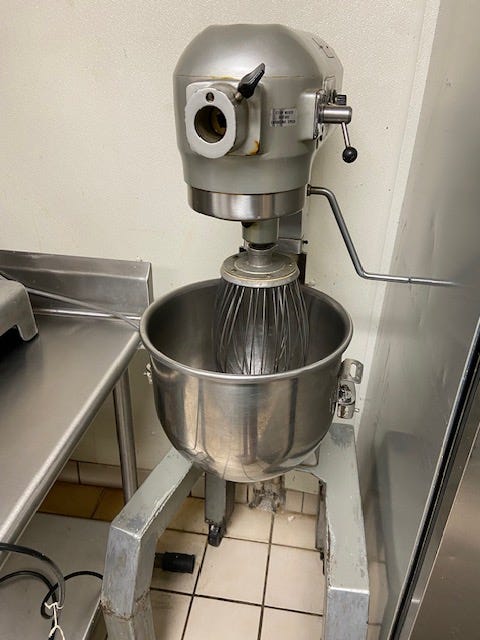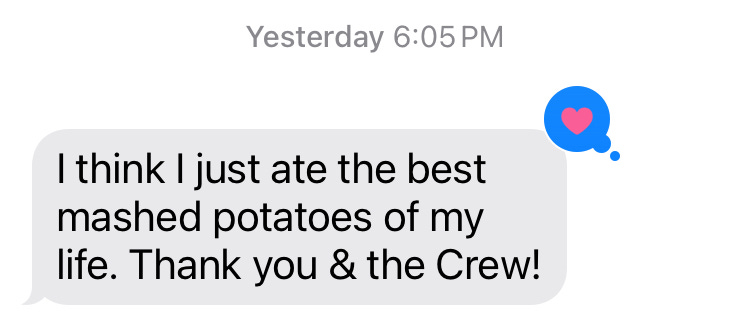Before the pandemic I frequently sold meals to families out of my home, sometimes cooking enough food for 80. A few weeks ago I started helping bring better nutrition to my church’s Wednesday night suppers. We serve about 125 people. The shift from 80 to 125 people is greater than scaling from 5 to 45.
Working in an industrial setting requires a different skill set and I’m on a steep learning curve. Thankfully the seasoned women I’m working with are eager to help me learn.
Instant vs Real Potatoes
Historically the church has served instant mashed potatoes. The recipe was a box from Sam’s, a gallon of milk and a gallon of water. Serve.

Real potatoes are cheap - and, actually a good source of nutrition when eaten in moderation. I endeavored to find volunteers to peel them, which is proving to be the greatest obstacle in serving real food to the masses.
That’s the problem at home, too, eh? Finding someone to do the work? I digress…

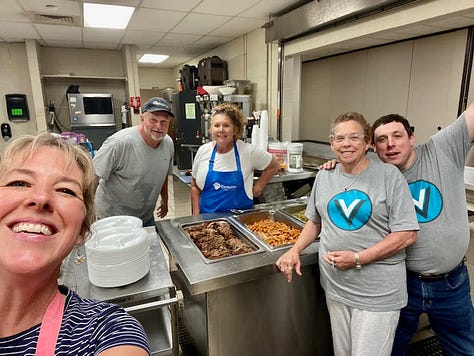
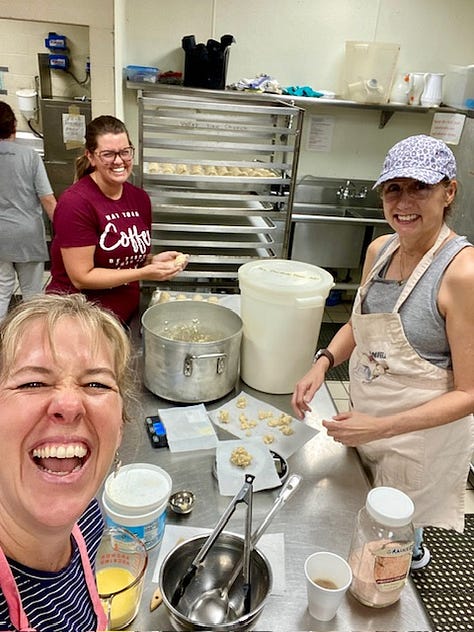
If you’ve made more than one thing in the kitchen, you know the pressure that comes from wanting to serve everything hot at the same time. Mashed potatoes are great for feeding a crowd (cost effective!) and there are things you can do a day in advance.
Confession: I don’t make mashed potatoes frequently, though my mom did. Before this week I didn’t feel confident in my potato making skill. So I researched it!
I told the homeschool girls, “If you ever want to eat something but don’t know how to do it, ask YouTube, Google — and all the ladies who do! Because that’s what I did before Tuesday.”
There’s a lot more at stake when messing up 40 pounds of potatoes for 125 hungry people than botching potatoes for my family of 5. I was motivated not to mess them up.
Tips for Great Mashed Potatoes
Rinse peeled potatoes, add to cold water in similar sized chunks, but not too small, 2-3” pieces. Alternatively, you could keep potatoes whole and skins slip off after cooking. When left whole they don’t absorb as much water. (The only Instagram reel of mine that ever went viral was this one I made a few days before Thanksgiving last year. I boiled potatoes with skin on then pushed through a cooling rack.)
This week we peeled potatoes a day in advance. Stored them in water in the fridge.
Salt the water as it heats on the stove, salty as you remember the ocean tasting. This could take a lot more salt than you think. Keep tasting the water until you get it salty as the ocean. The salt water serves two purposes:
keeps the nutrition IN the potatoes instead of leaching into the water that will be poured down the drain
helps the end product taste better. I learned in a fantastic cookbook called Salt, Fat, Acid, Heat that for best flavored food, salt in layers. This salty water is the beginning layer of salt. We salted the potatoes again (more?) to taste as they were whipped. Please oh please don’t wait to salt your food at the very end. You will actually use more salt and have less flavorful food. Salt helps draw out moisture which concentrates the flavor of your actual food.
Cook till fork tender - not just soft enough for fork to pass through, but so that fork causes potato to fall apart. We brought the potatoes to a boil around noon, turned off the heat and let them cook in the residual heat (GIANT pots take a long time to heat and cool.) We poured off the water at 3pm when we began the task of whipping them. It took an hour to whip 40 pounds in 3 batches.
As the water heats you will notice foam rising to the top of the water. This is impurities. If you notice it, take a spoon and remove it. The same goes for homemade broth - skim impurities as you see them rise. More broth tips in this post.
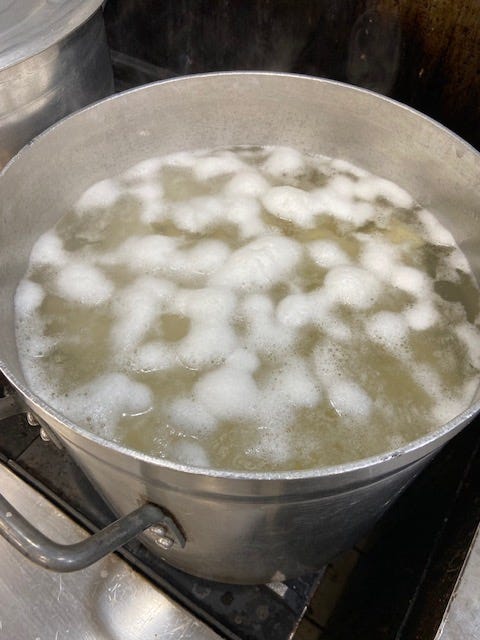
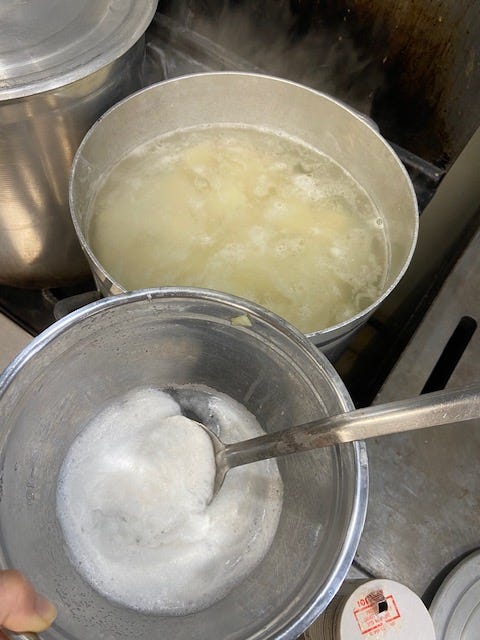
left: foam rises as water heats, right: it's scooped off Pour water off and potatoes into a colander. Get as much water off as possible. If mashing the potatoes with a hand mixer or masher, put the potatoes back into the hot pot you boiled them in. This will help more water evaporate.
Heat butter and cream/milk, separately. Pour butter in first (we used 3 sticks per 5lbs) to coat the starch and this results in silkier potatoes. The amount of water in the milk combines with the starch molecules, which makes the potatoes gluey. Note: my mom doesn’t heat the butter or the milk and she gets it right every time. For the masses we heated the butter and milk.
Add a bit of salt to the milk.
Mix slowly at first then increase the speed to whipping a few seconds at the very end.
Stop and taste. Add more salt, pepper and if you’re adventurous a bit of garlic powder.
Be sure to taste the potatoes and add enough salt!!
For more decadent potatoes, add cream cheese or sour cream. Here’s the Pioneer Woman’s recipe.
Garnish with extra butter and chopped parsley.
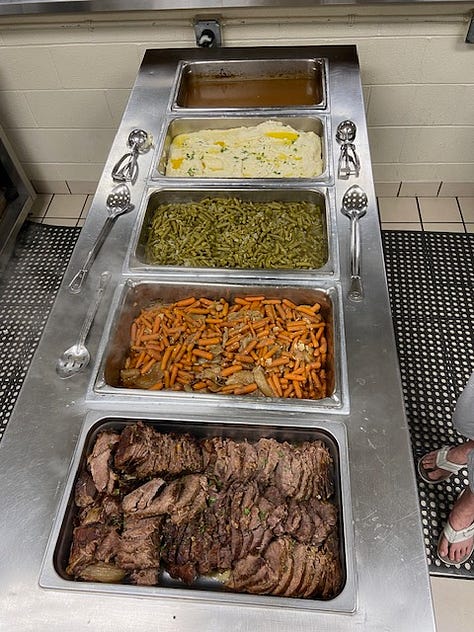
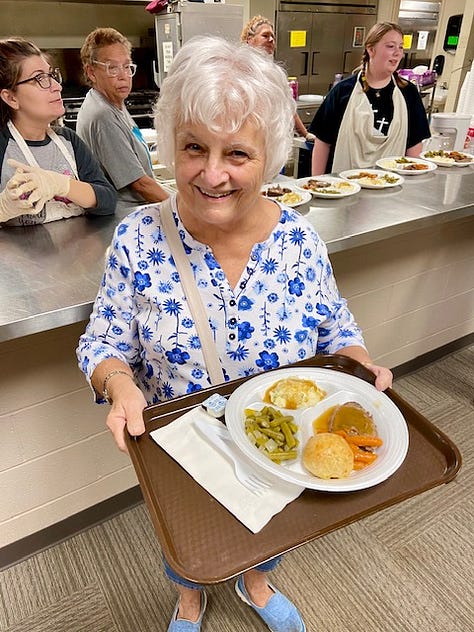
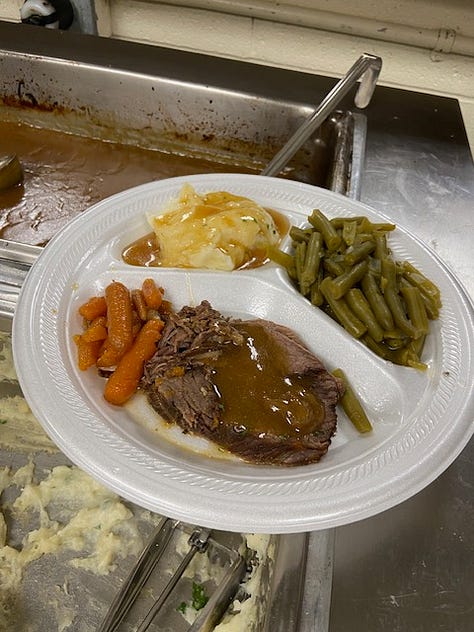
Middle: my next door neighbor, Rosemary.
Freezing Mashed Potatoes
This is something you could 100% do in advance of a big meal. Mashed potatoes have lots of fat in them which lends to freezing well. If I were to make them in advance, I would err on the side of “soupier” potatoes = with more milk. When reheating them moisture will evaporate causing them to dry out.
You could also refrigerate completed mashed potatoes a few days before the meal.
Life is hard; food doesn’t have to be.
Julie
PS - in case you missed it, please oh please listen to the first 15 minutes of this podcast with Dr. Casey Means. She and her lobbyist brother, Calley, expose how Big Pharma + government agencies + the food industry poisons America and keeps us sick.
It’s super engaging and jaw dropping.
If you’ve ever felt like you’re trying to convince your family to eat better — ask them to watch with you the first 15 minutes of the interview, it has 3M views on YouTube. Their book continues to be #1 on Amazon.
PSS - get 20% off super clean and effective makeup and skincare with code ADVOCATE20 at Crunchi until the end of September. Need help color matching? Let’s talk.
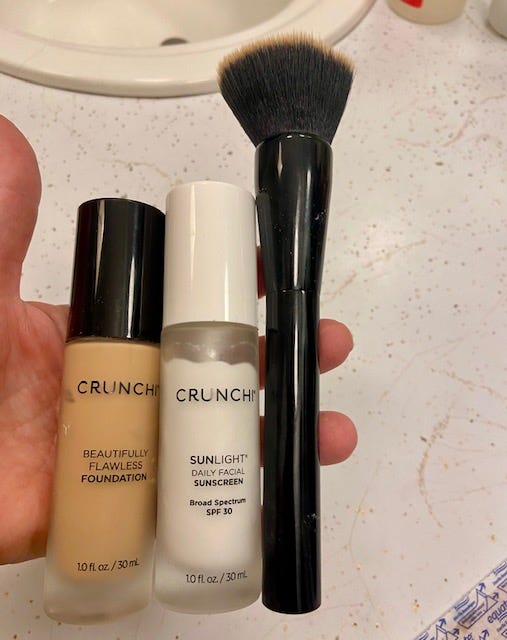

PSSS - Here’s a 2 minute math lesson: how Eratosthenes (d. 194 BC) calculated circumference of the Earth.
You’re smart and know how it works - some links are affiliate and I get a small commission with no extra cost to you.




